- Undergraduate
Bachelor's Degrees
Bachelor of ArtsBachelor of EngineeringDual-Degree ProgramUndergraduate AdmissionsUndergraduate Experience
- Graduate
Graduate Experience
- Research
- Entrepreneurship
- Community
- About
-
Search
Research Quick Takes
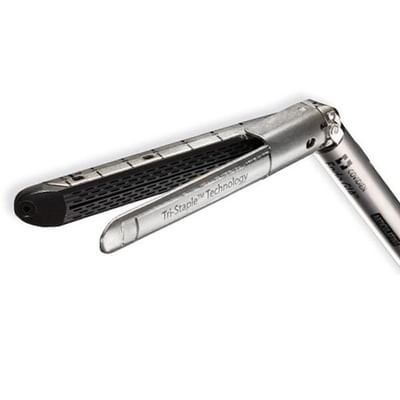
Jan 11, 2024
A Better, Safer Surgical Stapler
Professors Ethan Murphy and Ryan Halter, and PhD student Harsha Devaraj, along with Medtronic collaborators, coauthored "Development of an Electrical Impedance Tomography Coupled Surgical Stapler for Tissue Characterization" published in IEEE Transactions on Biomedical Engineering. The featured article investigates the incorporation of electrical impedance tomography into a surgical stapler to improve outcomes. Further studies are planned based on the promising results.

Jan 11, 2024
3D-Printed Tissue-Integrated Biosensors
Researchers Anand Tiwari and Sreejith Panicker, PhD students Julia Huddy and Md Saifur Rahman, and Professors Will Scheideler and Katie Hixon coauthored "Biocompatible 3D Printed MXene Microlattices for Tissue-Integrated Antibiotic Sensing" published in Advanced Materials Technologies. The study developed new electrode materials for 3D-printed porous electrochemical biosensors to monitor antibiotic release in tissue engineering scaffolds.
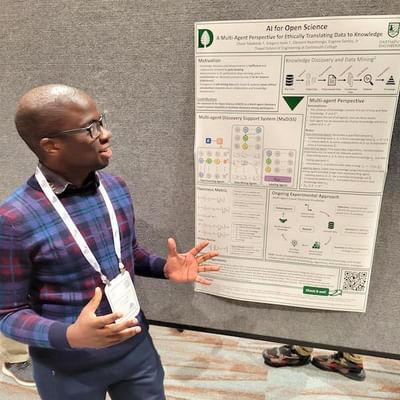
Jan 04, 2024
AI for Open Science
PhD students Gregory Hyde, Chase Yakaboski, and Clement Nyanhongo '17 Th'18 (pictured) presented on "AI for Open Science: A Multi-Agent Perspective for Ethically Translating Data to Knowledge" at the 37th Conference on Neural Information Processing Systems in New Orleans. "There were over 10,000 attendees, and some of the most accomplished researchers in our field. It was an inspiring week, and we're hopeful to continue Dartmouth's presence there next year," said Yakaboski.
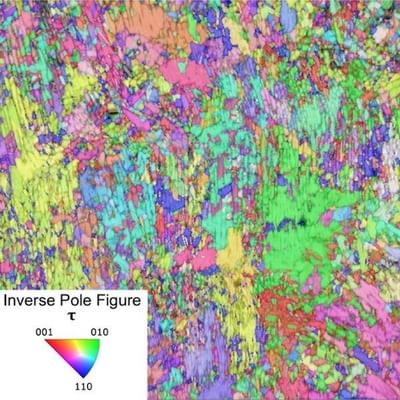
Jan 04, 2024
Advancing Magnet Manufacturing
Thomas Keller Th'23 and Professor Ian Baker, in collaboration with Professor Wen Chen and Wuxian Yang at UMass Amherst, co-authored "Additive manufacturing of Mn-Al permanent magnets via laser powder bed fusion" published in Materialia. "We produced rare-earth-free permanent magnets with enhanced performance and a novel microstructure—a great step toward more sustainable electric motors," said Keller.

Dec 14, 2023
Minimizing Climate Uncertainty
Professor Hélène Seroussi is first author on "Insights into the vulnerability of Antarctic glaciers from the ISMIP6 ice sheet model ensemble and associated uncertainty" published in The Cryosphere. "These results come from an international effort that I led to understand the sources of uncertainty in projections of ice sheet contribution to sea level rise, and highlight the need to continue improving ice flow models," says Seroussi.

Dec 14, 2023
Machine Learning for Better Materials
Professor Ian Baker is a co-author of "Quantitative three-dimensional imaging of chemical short-range order via machine learning enhanced atom probe tomography" published in Nature Communications. The article presents an approach "to break the inherent resolution limits of atom probe tomography" and "help design future high-performance materials."
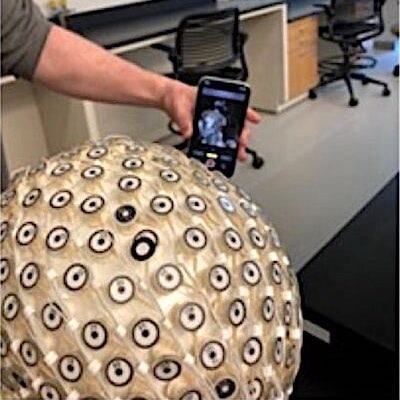
Dec 14, 2023
3D iPhone Scanning for EEG
Alums Alicia Everitt Th'19 and Haley Richards Th'22 are first authors on "EEG electrode localization with 3D iPhone scanning using point-cloud electrode selection" accepted for publication by the Journal of Neural Engineering. The authors, including Professors Ryan Halter and Ethan Murphy, present a method "using an iPhone to produce accurate high-density EEG scans for electrode localization—providing a needed portable and inexpensive solution," says Murphy.
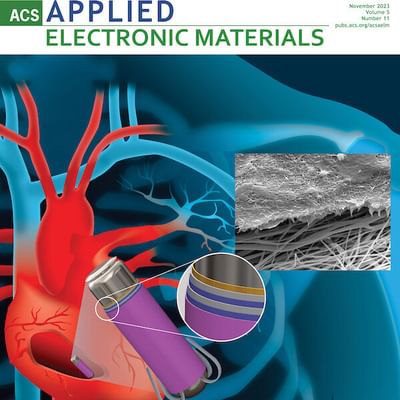
Dec 07, 2023
Piezoelectric Energy Harvesting
Andrew Closson Th'23, Research Associate Zhe Xu, Daniella Kubiak '20, Billy Jin Th'23, and Professor John Zhang are co-authors of "All-Electrospun Piezoelectric Energy Harvesting for Leadless Pacemakers" published in ACS Applied Electronic Materials, with an image by Thayer Graphic Designer Patricio Sarzosa accepted for the cover.

Nov 16, 2023
Global Conference on Osseointegration
Hixon Lab member and PhD Innovation fellow (surgical track) Adelaide Cagle attended the Global Collaborative Congress on Osseointegration in Charlotte, NC. Hers was chosen from a large group of abstracts for an oral presentation entitled "Tissue-Engineered Combination Construct for Osseointegration Support" and complimented as one of the best presentations at the conference.
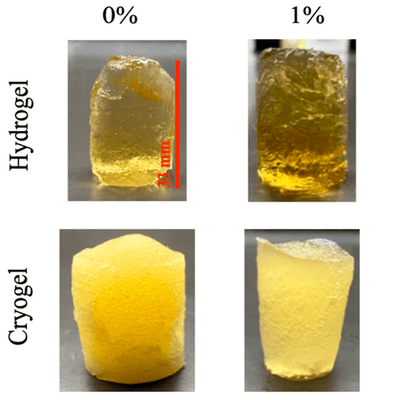
Nov 16, 2023
Manuka Honey for Wound Healing
Karina Mitchell '23 is first-author on a paper published in Gels on a standard of practice for incorporating the antibacterial properties of Manuka honey into tissue-engineered scaffolds and evaluating biofilm reduction. Co-authors include research assistant Sreejith Panicker and Calista Adler '26.
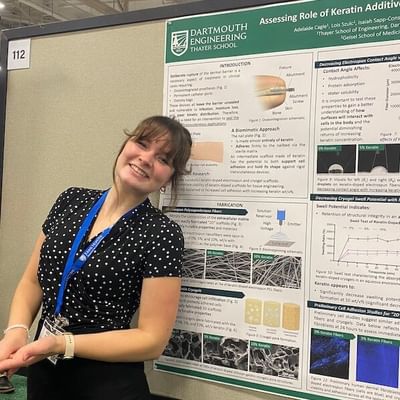
Oct 26, 2023
Biomedical Engineering Society Annual Meeting
The Hixon Lab attended the national Biomedical Engineering Society (BMES) Annual Meeting in Seattle, WA. PhD student Peter Bertone and Research Assistant Sree Panicker gave oral presentations on bone oncology and electrically-stimulated bone formation, respectively. PhD students Adelaide Cagle and Levi Olevsky gave poster presentations on dermal adhesion and craniofacial reconstruction, respectively.
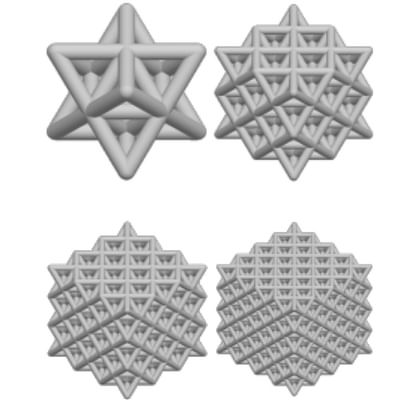
Oct 19, 2023
Metastructure-Based Pressure Sensors
PhD students Huan Zhao and Julia Huddy, and professors Yan Li and Will Scheideler are coauthors of "Rational Design of 3D-Printed Metastructure-Based Pressure Sensors" published in Advanced Engineering Materials. The study found that metastructure architecture design can lead to substantial expansion of the sensing range. The practical application of this technology was demonstrated in an undergraduate ENGS 33 bridge project.
